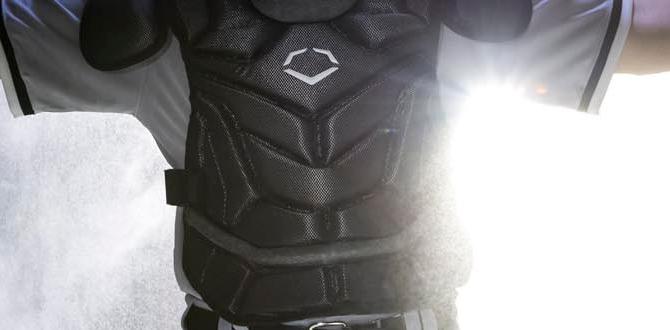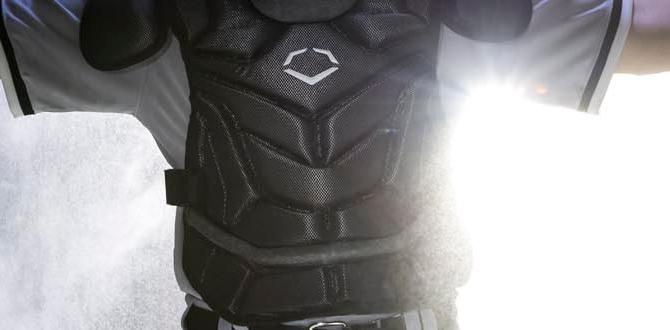Gym cables are a versatile tool that can dramatically improve your workout, offering a wide range of exercises for strength, endurance, and muscle toning. Investing in or utilizing gym cable machines can help you achieve peak fitness by providing consistent tension and controlled movements, making them essential for any serious fitness journey.
Feeling stuck in your workout routine? Maybe you’re not seeing the results you want, or you’re worried about gym equipment safety. You’re not alone! Many fitness enthusiasts hit plateaus or struggle with the basics of using gym machines effectively. We all want to get stronger, faster, and healthier, but the journey can sometimes feel confusing. Don’t fret! This guide is your clear path to understanding and mastering the gym cable machine. We’ll break down exactly what it is, why it’s so fantastic for your fitness goals, and how you can use it to supercharge your training. Get ready to unlock a whole new level of your workout!
What Exactly Is a Gym Cable Machine?
A gym cable machine is a piece of strength training equipment that uses a system of pulleys, ropes, and weights to provide resistance. Think of it as a sophisticated pulley system that holds a stack of weights. You select a weight, attach a handle or strap to the cable, and then pull or push to move the weight against gravity. The magic of a cable machine lies in its ability to offer a smooth, continuous tension throughout the entire range of motion of an exercise. This is different from free weights like dumbbells or barbells, where the resistance can change as you lift due to gravity’s effect. Cable machines allow for a huge variety of exercises targeting almost every muscle group in your body.
Why Are Gym Cables an Essential Upgrade for Peak Fitness?
You might be wondering, “Why cable? Isn’t lifting weights enough?” While free weights are excellent, cable machines bring unique benefits to the table that can truly elevate your fitness game:
- Constant Tension: Unlike free weights, cables keep tension on your muscles throughout the entire movement, from the start to the finish. This means your muscles are working harder for longer, leading to better muscle growth and strength gains.
- Versatility: One cable machine can mimic hundreds of exercises. You can target specific muscles, perform compound movements, and even do exercises that are difficult or impossible with free weights.
- Joint-Friendly: The controlled, smooth movement of cables is often easier on your joints than the sometimes jerky or unbalanced nature of free weights. This can be especially beneficial for people with joint issues or those recovering from injuries.
- Improved Stability and Balance: Because the machine guides the movement, it helps you focus on contracting the target muscle without having to worry as much about stabilizing the weight. This allows for better mind-muscle connection and can help build a strong foundation.
- Adjustable Resistance: With most cable stacks, you can easily adjust the weight by simply moving a pin. This makes it simple to progressively overload your muscles (the key to continuous improvement) or to quickly switch between exercises.
- Great for Rehabilitation: The controlled resistance makes cable machines a favorite in physical therapy settings for safely regaining strength and mobility.
Getting Started: The Absolute Basics of Using a Cable Machine
Using a cable machine for the first time might seem a little intimidating, but it’s actually quite straightforward. Here’s a step-by-step guide to get you comfortable:
1. Understand the Parts
At its core, a cable machine has a few key components:
- Weight Stack: The set of metal plates you select your resistance from.
- Pulley System: The wheels that guide the cable.
- Cable: The strong steel rope connecting the pulleys and the weight stack to the attachment.
- Attachments: These are the handles, straps, or bars you grip. Common ones include:
- D-handle (small, U-shaped)
- Straight bar (long, straight bar)
- EZ curl bar (curved bar for biceps)
- Rope attachment (a knotted rope)
- Ankle strap (for leg exercises)
- Carriage/Column: The part that moves up and down, allowing you to adjust the height of the pulley.
2. Choosing Your Weight
This is crucial. For most exercises, you want to choose a weight that challenges you but allows you to complete the desired number of repetitions with good form.
- Beginners: Start light! It’s much better to use too little weight with perfect form than too much with sloppy form.
- Reps and Sets: For muscle growth (hypertrophy), aim for 8-12 repetitions per set. For strength, aim for 4-6 reps. For endurance, aim for 15-20 reps.
- Form Over Weight: Always prioritize proper technique. If you can’t maintain good form for your target rep range, the weight is too heavy.
A good starting point for many exercises is around 15-30 lbs (7-14 kg). You can always increase or decrease it after your first set.
3. Selecting and Adjusting Attachments
The attachment you use will depend on the exercise and the muscle group you’re targeting. For example, a D-handle is great for rows and bicep curls, while a straight bar is good for pulldowns or standing chest presses.
Adjusting Pulley Height: Most cable machines allow you to adjust the height of the pulley. Look for a pin or lever on the carriage.
- High Pulley: Used for exercises coming from overhead or a high position, like lat pulldowns or triceps pushdowns.
- Mid Pulley: Used for exercises performed at chest or shoulder height, like chest flies or seated rows.
- Low Pulley: Used for exercises coming from the floor or a low position, like squats, deadlifts, or leg curls.
4. Executing the Movement
This is where the work happens! Here are some general tips for good form on cable exercises:
- Controlled Pace: Don’t let the weight drop quickly. Control both the lifting (concentric) phase and the lowering (eccentric) phase of the movement. The eccentric phase is just as important for muscle building.
- Full Range of Motion: Move the weight through its complete, natural path. Stretch the muscle at the start and squeeze it at the end, without locking out joints completely. The Mayo Clinic emphasizes the importance of full range of motion for effective strength training.
- Mind-Muscle Connection: Focus on the muscle you’re trying to work. Feel it contracting and stretching. This engagement is key to effective training.
- Keep Your Core Tight: Engage your abdominal muscles throughout the exercise to support your spine and create stability.
Top 5 Essential Cable Exercises for a Full-Body Workout
Here are some fundamental cable exercises that will give you a fantastic workout. We’ll cover exercises for your upper body, lower body, and core.
1. Lat Pulldowns (Upper Back & Biceps)
This is a classic exercise that directly targets your latissimus dorsi (lats), the large muscles on your back that give you that V-taper look. It’s also a great way to work your biceps.
- Setup: Sit facing the machine. Attach a wide bar to the high pulley. Grab the bar with an overhand grip, hands slightly wider than shoulder-width apart. Sit up tall, with your chest puffed out, and slightly arch your lower back. Your knees should be secured under the leg pads.
- Execution: Pull the bar down towards your upper chest. As you pull, squeeze your shoulder blades together and focus on engaging your back muscles. Keep your torso stable; avoid leaning back too much. Control the weight as you slowly let the bar return to the starting position, allowing your lats to stretch.
- Tips: Think about pulling with your elbows, not just your hands. Avoid using momentum.
2. Cable Rows (Mid-Back & Biceps)
This exercise is excellent for building thickness in your upper and mid-back, balancing out the pulling motion of pulldowns. It also works your biceps and forearms.
- Setup: Sit on the bench facing the machine. Attach a V-bar or D-handle attachment to the low pulley. Sit with your feet firmly planted on the footrest, knees slightly bent. Keep your back straight, chest out, and shoulders back.
- Execution: With a slight lean forward (maintaining a straight back), pull the handle towards your torso, aiming for your belly button area. Squeeze your shoulder blades together at the peak of the movement. Slowly extend your arms back to the starting position, feeling a stretch in your back muscles.
- Tips: Keep your torso relatively steady. Don’t let your back round.
3. Chest Press (Chest, Shoulders, Triceps)
Cable chest presses offer a consistent tension on your pectoral muscles that free weights sometimes miss, especially at the end of the movement.
- Setup: Set the pulleys to chest height. Stand in front of the machine with one foot slightly ahead of the other for balance. Attach a D-handle to each pulley. Grasp the handles with your palms facing down and step forward a few paces.
- Execution: Start with your arms extended to the sides, hands framing your chest, elbows bent. Press the handles forward and pull them together in front of your chest, squeezing your pectoral muscles. Slowly return to the starting position, controlling the resistance.
- Tips: Keep your elbows slightly bent throughout and avoid locking them out. You can also perform this exercise standing between two cable columns.
4. Cable Squats (Legs & Glutes)
While not a replacement for heavy barbell squats, cable squats are a fantastic way to add volume, improve muscle endurance, and focus on the squeeze at the top.
- Setup: Attach a straight bar or rope attachment to the low pulley. Stand facing away from the machine, between the pulley and the weight stack. Squat down slightly and step forward to get the attachment over your head and resting on your upper traps or back of your shoulders (like a barbell squat). Step forward enough to create tension.
- Execution: With the bar on your back and tension pulling you forward, perform a squat. Lower your hips down as if sitting into a chair, keeping your chest up and back straight. Go as low as comfortable while maintaining good form. Drive through your heels to stand back up, squeezing your glutes at the top.
- Tips: Focus on pushing your knees out and keeping your core engaged. The cable provides a constant pull forward, which can help improve your squat depth and balance.
5. Cable Crunches (Core)
This exercise targets your abdominal muscles with added resistance, making it more challenging than bodyweight crunches.
- Setup: Attach a rope handle to the high pulley. Kneel in front of the machine, facing away from the weight stack. Grasp the rope ends and bring them to the sides of your head, with your elbows bent.
- Execution: Keeping your hips relatively still, contract your abdominal muscles to pull the rope towards the floor, curling your torso downwards. Focus on a strong contraction of your abs. Slowly return to the starting kneeling position, allowing your abs to stretch.
- Tips: Don’t use your back to do the primary work; the movement should come from your core. Control the weight on the way up.
Understanding Cable Attachments and Their Uses
The right attachment can make all the difference in your workout. Here’s a quick rundown of common attachments and what they’re best for:
| Attachment | Common Uses | Primary Muscles Targeted |
|---|---|---|
| D-Handle | Bicep curls, triceps extensions, rows, chest flies, face pulls | Biceps, Triceps, Back, Shoulders, Chest |
| Straight Bar | Lat pulldowns, triceps pushdowns, upright rows, bent rows, cable squats | Back, Biceps, Triceps, Shoulders, Legs |
| EZ Curl Bar | Bicep curls, hammer curls, triceps pushdowns | Biceps, Triceps |
| Rope Attachment | Triceps pushdowns, bicep curls, face pulls, overhead extensions, cable wood chops | Triceps, Biceps, Shoulders, Upper Back, Core |
| Ankle Strap | Leg extensions, hamstring curls, hip abductions, hip adductions | Quads, Hamstrings, Glutes, Inner/Outer Thighs |
Progressing Your Cable Workouts: The Key to Continuous Improvement
To keep making gains, you need to challenge your muscles. This is called progressive overload. Here’s how you can do it with cable machines:
- Increase Weight: The most straightforward method. Once you can easily complete your target reps with good form, add a small amount of weight (e.g., 5-10 lbs or 2.5-5 kg).
- Increase Reps: If you’re not ready to increase weight, try doing more repetitions with the same weight.
- Increase Sets: Perform an extra set for an exercise.
- Decrease Rest Time: Shorter rest periods between sets increase the intensity and metabolic stress on your muscles.
- Improve Form & Range of Motion: Focus on a slower tempo, a greater squeeze at the peak contraction, and a fuller stretch at the bottom.
- Change Attachments/Angle: Using a different attachment or adjusting the pulley height can change the resistance curve and challenge your muscles in a new way.
Safety First: Using Cable Machines Responsibly
While cable machines are generally very safe, a few precautions will ensure you have a great workout without injury:
- Test the Weight: Especially when trying a new machine or exercise, do a few lighter sets to get a feel for the movement and the weight.
- Check for Wear and Tear: Before using a machine, quickly look at the cables. If you see any fraying or damage, inform gym staff immediately. Industry resources like IHRSA offer guidelines on proper gym equipment maintenance, which is vital for safety.
- Maintain Control: Never let the weights crash down. Control the eccentric (lowering) phase of each repetition.
- Proper Footing: Ensure your feet are stable and planted, especially for standing exercises.
- Clear the Area: Make sure there’s enough space around you to move freely without bumping into other equipment or people.
- Listen to Your Body: If you feel sharp pain, stop the exercise immediately.
Cable Machines vs. Other Equipment
It’s helpful to understand how cable machines stack up against other common gym equipment:
| Feature | Cable Machine | Dumbbells/Barbells | Resistance Bands |
|---|---|---|---|
| Tension | Constant throughout movement | Varies with gravity; often hardest at the midpoint | Increases with stretch; less at the start |
| Stabilization Required | Less (machine guides movement) | More (user must control balance) | Moderate to High (depending on exercise) |
| Versatility | Very High (many exercises) | High (fundamental for most exercises) | Moderate (limited by band strength) |
| Joint Friendliness | Generally high | Can be harder on joints if form is poor | Good, but some can be too elastic |
| Portability | None (fixed gym equipment) | High | Very High |
| Progressive Overload | Easy (weight stack adjustment) | Requires adding weight plates | Requires adding bands or doubling up |
Frequently Asked Questions About Gym Cables
What muscles can I work with a cable machine?
You can work virtually every muscle group with a cable machine! From your lats and chest to your biceps, triceps, hamstrings, quads, glutes, and core, the versatility of cable machines allows for a comprehensive full-body




